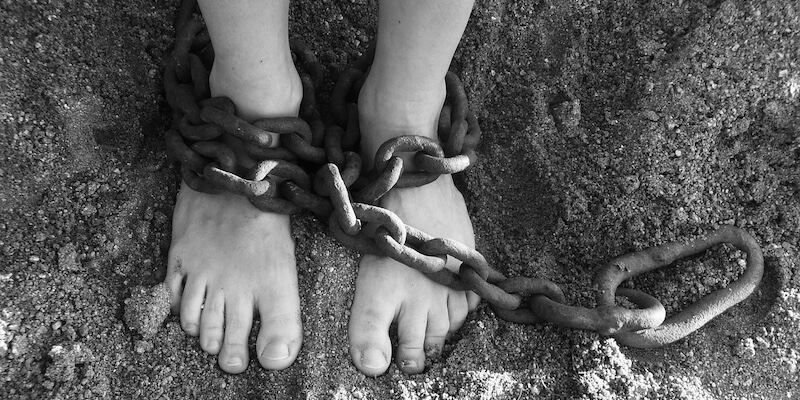Attachment Styles in Relationships: 6 Worksheets for Adults
 When John Bowlby (1988) introduced his theory of attachment, he described the psychotherapist as being like a responsive mother with a child; they must be sensitive, provide security as they explore the world, and offer support when needed (Mikulincer & Shaver, 2016).
When John Bowlby (1988) introduced his theory of attachment, he described the psychotherapist as being like a responsive mother with a child; they must be sensitive, provide security as they explore the world, and offer support when needed (Mikulincer & Shaver, 2016).
Bowlby’s (1988) theory suggests that attachments formed with caregivers in our childhood impact our relationships in adulthood, including our capacity for closeness, need for autonomy, and fear of loss.
In this article, we discuss attachment theory and the attachment styles we adopt as grown-ups in relationships, and offer worksheets helpful in transforming insecure working models into secure ones.
Before you continue, we thought you might like to download our three Positive Relationships Exercises for free. These detailed, science-based exercises will help you or your clients build healthy, life-enriching relationships.
This Article Contains:
Attachment Styles in Adulthood: The 4 Types Explained
Attachment theory was proposed as “the basis for a unified approach to psychotherapy” with the potential to provide interventions in individual therapy, couples therapy, and family therapy (Johnson, 2019, p. 5).
Relationships are crucial to the theory and the attachments themselves, and essential and intrinsic to what it means to be human, with ongoing research showing that secure attachment is linked to multiple areas of mental wellbeing and general health (Johnson, 2019).
Research has uncovered four distinct adult attachment styles, each one corresponding to childhood attachment styles and impacting how we (Levy & Orlans, 2014):
- Perceive and manage emotional and sexual intimacy
- Communicate emotions and needs and listen to our partners
- Respond to conflict
- Form internal working models of our expectations about our partner and the relationship
The four attachment styles – underpinned by the three dimensions of closeness, dependence/avoidance, and anxiety – are typically described as follows (Levy & Orlans, 2014):
- Secure – Low avoidance and low anxiety
Neither fearful of rejection nor intimacy and not preoccupied with the relationship. The individual doesn’t worry about closeness, being depended on, or being abandoned.
- Avoidant – High avoidance and low anxiety
Uncomfortable with closeness and valuing freedom and independence over concerns regarding their partner’s availability. They may find it difficult to trust others and prefer not to be depended upon.
- Anxious – Low avoidance and high anxiety
Longing for intimacy and closeness and highly insecure regarding the relationship. They worry that their partner doesn’t love them yet are aware that their craving for closeness scares people away.
- Anxious–Avoidant – High avoidance and high anxiety
Concerned that their partner’s love (and the relationship) will fail to last and uncomfortable with intimacy and closeness of all kinds. This style is less common, leaving the individual fearful of getting hurt and avoiding trust and dependency.
Each attachment style affects our behavioral, cognitive, and social aspects and shapes the partner we choose (Levy & Orlans, 2014).
The Effects on Relationships

Early in childhood, we form close relationships and attachments to parents or caregivers. Based on the quality of those relationships, the mental representations we develop serve as organizing factors later in life (Marrone, 2014).
Returning to the four attachment styles, their impact on relationships is as follows (Levy & Orlans, 2014):
- Secure – Low avoidance and low anxiety
Impact on relationship:
-
- Comfortable in an emotionally close relationship
- Depends on and depended on by their partner
- Available to their partner when needed
- Does not feel rejected when their partner needs separateness
- Trusting and tolerant of differences between themself and their partner
- Not overly or unnecessarily upset by relationship issues
- Warm and caring as a parent
- Avoidant – High avoidance and low anxiety
Impact on relationship:
-
- Remains emotionally distant, often keeping their partner wanting more connection
- Sees intimacy as a loss – prefers autonomy
- Unable to depend on a partner or be depended upon
- Uncomfortable talking about emotions, so keeps communication intellectual
- Self-sufficient, preferring to be alone
- Takes charge in a crisis, remaining unemotional
- Anxious – Low avoidance and high anxiety
Impact on relationship:
-
- Insecure and preoccupied with the relationship
- Needy and worried about abandonment
- Ruminates on unresolved issues from the past
- Emotional, argumentative, controlling, and angry
- Blames the other person while remaining uncollaborative
- Inconsistent with their children, leaving them anxiously attached
- Anxious–Avoidant – High avoidance and high anxiety
Impact on relationship:
-
- Unable to tolerate emotional closeness or manage emotions
- Can form abusive and dysfunctional relationships
- Lack of empathy and argumentative
- Antisocial behaviors such as criminality and substance abuse
- Mistreats their children, leading to the development of disorganized attachments
It is helpful to remember that “anxious adults had inconsistent parents. Avoidants had caregivers who were distant and rejecting” (Levy & Orlans, 2014, p. 262).
Ultimately, our adult attachment styles are strongly influenced by much earlier parent–child interactions (other factors include genetics). They affect our temperaments and ability to form close partnerships and a low-stress satisfying marriage (Levy & Orlans, 2014).
Can Attachment Styles Change?
Bowlby (1988) recognized that while it is difficult to change attachment patterns in adulthood, it is not impossible.
Bowlby’s model of therapeutic change was “based on helping a client understand his or her accumulated, and often forgotten or misunderstood, attachment experiences” and ultimately transforming insecure working models into more secure ones (Mikulincer & Shaver, 2016, p. 444).
A crucial aspect of therapy based on attachment theory is providing a secure base for identifying, clarifying, questioning, revising, and transforming existing models into more adaptive ones. To do this, the client must engage in difficult self-exploration to uncover (partially or fully) hidden memories and face complexities previously avoided (Mikulincer & Shaver, 2016).
Bowlby (1988) recognized that working models can be revised with careful treatment and support.
Recent studies confirm that effective relationship therapy can indeed transform attachment orientations. One such report concluded “that a significant proportion of inpatients receiving psychodynamic psychotherapy changed to a secure state of mind” (Mikulincer & Shaver, 2016, p. 447).
Changing Attachment Styles: 14 Tips

Generally, these include (modified from Brisch, 2012):
- Allowing and encouraging the client to communicate via their activated attachment system
- Making themselves emotionally available to the client
- Becoming a secure and reliable base from which the client can safely work through issues
- Remaining flexible in how they handle closeness with the client and considering the attachment patterns used
- Encouraging the patient to consider which attachment strategies they are presently using
- As therapist and client, encouraging examination of the therapeutic relationship
- Supporting the client as they compare current feelings and perceptions with those they experienced as a child
- Helping the client understand that their view of self and their working models formed during childhood may not be outdated
- Encouraging the client to voice their separation concerns and anxieties
Each of the tips above is based on the belief that early childhood interactions with attachment figures carry over into therapy (Brisch, 2012).
More specifically, Bowlby (1988) described “five therapeutic tasks that contribute to the revision of insecure working models,” covered, in brief, below (Mikulincer & Shaver, 2016, p. 444):
- Provide clients with a safe place to work through painful memories, emotions, and unhelpful beliefs and behaviors.
- Identify and understand how the client currently relates to people in their lives.
- Examine how the client relates to the therapist, including their attitudes and feelings.
- Help the client understand their working models of self and their roots in early childhood.
- Encourage clients to recognize that such models, though once adaptive, require a better fit to their current circumstances.
Attachment-based interventions must recognize and account for “the trauma induced by rejection, separation, and loss and the impact these experiences have on mental health,” secure emotional connections, and beyond (Mikulincer & Shaver, 2016, p. 446).
Put on your attachment hat & change your romantic attachment style
6 Helpful Worksheets for Adults
Working through past experiences, understanding what influences our attachment styles, and investing in building a stronger bond with our partner can create more resilient, deeper relationships.
The following worksheets, adapted from Lawson (2019) and Chen (2019), explore who we are and how to improve our most essential connections.
Getting to Know Your Partner
There are many things we can do to increase our sense of attachment security. One is to learn more about our partner, sharing details to improve closeness and strengthen bonds.
Use the Getting to Know Your Partner worksheet with your clients to help them get to know each other better.
Ask each partner a series of 10 questions and prompts, such as:
- Name your top five dinner dates (famous people or friends, dead or alive).
- Describe how your perfect day might look.
- Name the place or time you would most like to visit.
- What three things do you have in common?
- Name five positive traits about your partner.
Sharing answers can help the couple become more secure in the relationship by forming deeper connections and understandings.
Finding Activities to Share
Learning to be more present in the relationship and with a partner can break existing negative cycles resulting from unhealthy attachment styles.
Use the Finding Activities to Share worksheet to identify a list of activities that clients and their partners can take part in to improve bonding.
They can use the list of activities to plan time together to build a stronger relationship.
Understanding the Values You Want in a Relationship
People often seek out or enter into relationships without knowing what they want. Gaining a greater understanding of personal values helps build stronger relationships.
Use the Understanding the Values You Want in a Relationship worksheet to form a better understanding of the couple’s values and what gives their lives meaning, such as:
- What does the word ‘values’ mean to you in terms of your relationship and family?
- What three changes would you like to see in your relationship?
- What are your partner’s most important values?
- How could you show your values more in your relationship?
Sharing answers can create open discussions of the values each partner would like to build on in the relationship.
Friendships and Opinions of Yourself and Others
Our attachment styles, including how we see ourselves and our opinions of others, affect how we face social situations and interact with friends.
Use the Friendships and Opinions of Yourself and Others worksheet to help your client understand the factors that impact their friendships.
Ask them to:
- Reflect on opinions of themselves that they believe impact their relationships.
- Consider their opinions of others that they believe impact their relationships.
Then ask the couple to think about how changing negative opinions and focusing more on the positives could transform their relationships.
Making and Strengthening Friendships
Regardless of attachment style, it is possible to make friends and strengthen bonds.
Use the Making and Strengthening Friendships worksheet to encourage clients to reflect on the positives associated with forming good friendships.
Ask your client to reflect on a series of questions, including:
- How does being around your friends improve your mood?
- Why does having friends improve your mental health?
- How do your friends increase your sense of self-worth?
Then ask them to think of three people they can begin friendships with and three existing relationships they could strengthen.
Anxious Attachment Patterns
The following exercise helps identify and understand anxious attachment patterns in a relationship.
Use the Anxious Attachment Patterns worksheet to dig deeper into clients’ uncomfortable experiences.
Ask the client to think of a time in a relationship when they felt bad and consider a series of prompts, including:
- What was the trigger (or triggers) that made you feel bad?
- What was the worst part of the incident?
- How has that incident and others like it impacted your current relationship?
The insights gained will help you understand your existing relationship and unhelpful triggers more clearly.
A Look at Attachment Styles in Friendships

A lack of social adjustment and insecurity in infancy play important roles in predicting the success of peer relationships and friendships in adolescence and even adulthood (Mikulincer & Shaver, 2016).
“Attachment insecurities […] are consistently associated with low-quality friendships: low levels of trust, self-disclosure, mutuality, and satisfaction, and high levels of conflict and tension” (Mikulincer & Shaver, 2016, p. 297).
A client having difficult relationships with friends or peers at work may benefit from working on attachment styles in a therapeutic setting.
PositivePsychology.com’s Relevant Resources
Techniques and exercises that increase self-awareness and improve our understanding of how we relate to one another can help us strengthen relationships and foster enduring bonds.
Why not download our free positive relationships tool pack and try out the powerful tools contained within? Some examples include:
- The Sound Relationship House Inspection
This wonderful exercise uses a metaphor to help couples reflect on how their relationship is functioning. - Identifying Our Expert Companions
This worksheet helps clients discover what they need from an expert companion.
Other free resources include:
- Relationship Authenticity Checklist
Use this checklist yourself or with clients to better understand whether you treat yourself and others authentically. - Conflict at School
Understanding relationships in our early years can help us identify unhelpful connections we form as adults.
More extensive versions of the following tools are available with a subscription to the Positive Psychology Toolkit©, but they are described briefly below:
- Connecting With Others by Self-Disclosure
We can form stronger relationships through a willingness to expose our true feelings, insecurities, and needs.
In this exercise, we practice self-disclosure using a series of questions, taking turns as speaker and listener.
- Investing in Valued Relationships
To form high-quality, meaningful connections, we must invest in less superficial relationships and spend more time on high-quality valued relationships.- Step one – Understand what a valued relationship means to you.
- Step two – Identify your most valued relationships.
- Step three – Recognize how much time you currently invest in these relationships.
- Step four – Learn how to invest more time, show your appreciation, and be more present.
If you’re looking for more science-based ways to help others build healthy relationships, this collection contains 17 validated positive relationships tools for practitioners. Use them to help others form healthier, more nurturing, and life-enriching relationships.
A Take-Home Message
While our past influences our present attachment styles and the mental representation we form, it need not dictate how we feel, act, and think toward relationships.
Bowlby’s (1988) attachment theory recognizes that our child–parent relationships shape how we grow and maintain connections with other adults, including our fear of loss, ability to form close bonds, and need for autonomy.
However, we can transform the sometimes unhelpful models we build based on early relationships, often the result of difficult parenting circumstances, with support from therapy in adulthood.
Psychotherapy based on attachment theory offers a practical and effective approach for clients seeking help with attachment issues and has proven helpful in individual, couples, and family therapy.
By working with clients to build more secure attachments, it is possible to improve existing and future relationships, growing intimacy and strengthening communication while reducing conflict and unreasonable expectations.
We hope you enjoyed reading this article. Don’t forget to download our three Positive Relationships Exercises for free.
- Bowlby, J. (1988). A secure base: Parent–child attachment and healthy human development. Basic Books.
- Brisch, K. H. (2012). Treating attachment disorders: From theory to therapy (2nd ed.). Guilford Press.
- Chen, A. (2019). The attachment theory workbook: Powerful tools to promote understanding, increase stability & build lasting relationships. Althea Press.
- Johnson, S. M. (2019). Attachment theory in practice: Emotionally focused therapy (EFT) with individuals, couples, and families. Guilford Press.
- Lawson, D. (2019). Attachment theory workbook. Author.
- Levy, T. M., & Orlans, M. (2014). Attachment, trauma, and healing: Understanding and treating attachment disorder in children, families and adults. Jessica Kingsley.
- Marrone, M. (2014). Attachment and interaction: From Bowlby to current clinical theory and practice. Jessica Kingsley.
- Mikulincer, M., & Shaver, P. R. (2016). Attachment in adulthood: Structure, dynamics, and change. Guilford Press.
Let us know your thoughts
Read other articles by their category
- Body & Brain (49)
- Coaching & Application (57)
- Compassion (26)
- Counseling (51)
- Emotional Intelligence (24)
- Gratitude (18)
- Grief & Bereavement (21)
- Happiness & SWB (40)
- Meaning & Values (26)
- Meditation (20)
- Mindfulness (45)
- Motivation & Goals (45)
- Optimism & Mindset (34)
- Positive CBT (28)
- Positive Communication (20)
- Positive Education (47)
- Positive Emotions (32)
- Positive Leadership (18)
- Positive Parenting (3)
- Positive Psychology (33)
- Positive Workplace (37)
- Productivity (16)
- Relationships (46)
- Resilience & Coping (36)
- Self Awareness (21)
- Self Esteem (37)
- Strengths & Virtues (31)
- Stress & Burnout Prevention (34)
- Theory & Books (46)
- Therapy Exercises (37)
- Types of Therapy (64)





What our readers think
Didnt the “ blame the mom for everything “ concept die already? This article is disgusting and the writer, reviewer and the website should be ashamed of themselves for promoting this garbage. Shame on you. So much for positive psychology.
Hi there,
I’m truly sorry to hear that the article did not meet your expectations and caused frustration. We aim to present information in a balanced and well-researched manner, and it’s clear we’ve missed the mark for you. Understanding different perspectives is crucial for us. Could you please share specific aspects of the article that you found problematic? This will help us review the content more effectively and ensure it aligns with our commitment to responsible and informative writing.
Warm regards,
Julia | Community Manager
مقال موفق